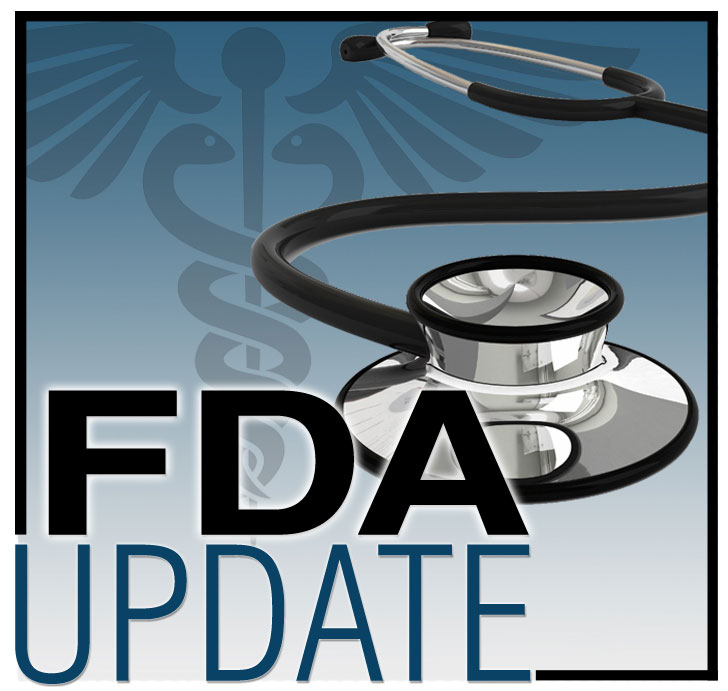
On September 14, 2017, the U.S. Food and Drug Administration (FDA) approved a lower dose of cabazitaxel (20 mg/m2 every 3 weeks) (Jevtana®, Sanofi-Aventis) in combination with prednisone for the treatment of patients with metastatic castration-resistant prostate cancer previously treated with a docetaxel-containing treatment regimen. Cabazitaxel (25 mg/m2 every 3 weeks) was approved for this indication in 2010.
The approval was based on data from a noninferiority, multicenter, randomized, open-label trial (PROSELICA) of 1200 patients with metastatic castration-resistant prostate cancer previously treated with a docetaxel-containing regimen. This trial was conducted as a post-marketing requirement to evaluate a lower dose compared with the approved dose of 25 mg/m2. Patients received either cabazitaxel 25 mg/m2 (n=602) or the 20 mg/m2 (n=598) dose.
The trial demonstrated noninferiority in overall survival (OS) of cabazitaxel 20 mg/m2 in comparison with 25 mg/m2 in an intent-to-treat population. The estimated median OS was 13.4 months for patients on the lower dose compared with 14.5 months for patients receiving the higher dose (hazard ratio=1.024; 97.78% CI: 0.886, 1.184). Based on the per-protocol population, the estimated median OS was 15.1 and 15.9 months on cabazitaxel 20 mg/m2 and cabazitaxel 25 mg/m2, respectively (hazard ratio=1.042; 97.78% CI: 0.886, 1.224).
The major safety findings, myelosuppression, infections and increased toxicity, occurred with greater frequency on the 25 mg/m2 arm compared to the lower dose. Deaths within 30 days of the last study drug dose (5.4% vs. 3.8%), and early infection-related deaths within 30 days of the treatment initiation (1.3% vs 0.7%) were more common on the 25 mg/m2 arm compared to the 20 mg/m2 arm. All of the early infection-related deaths occurred in patients greater than 60 years of age. Primary prophylaxis with G-CSF is recommended in patients with high-risk clinical features.
Adverse reactions and laboratory abnormalities occurring in greater than 10% of patients treated with cabazitaxel on clinical trials were neutropenia, anemia, leukopenia, thrombocytopenia, diarrhea, fatigue, nausea, vomiting, constipation, asthenia, abdominal pain, hematuria, back pain, and anorexia. Grade 3-4 infections were reported in 20% patients on the 25 mg/m2 arm and 10% patients on the lower dose. Febrile neutropenia occurred in 9% of patients on the 25 mg/m2 arm and in 2% on the 20 mg/m2 arm. The most common reasons for dose discontinuation were fatigue and hematuria.
The recommended dose of cabazitaxel is 20 mg/m2 administered every three weeks as a one-hour intravenous infusion in combination with oral prednisone 10 mg administered daily. A dose of 25 mg/m2 can be used in select patients at the discretion of the treating healthcare provider.
The full prescribing information is available.
Healthcare professionals should report all serious adverse events suspected to be associated with the use of any medicine and device to FDA’s MedWatch Reporting System by completing a form online, by faxing (1-800-FDA-0178) or mailing the postage-paid address form provided online, or by telephone (1-800-FDA-1088).
Follow the Oncology Center of Excellence on Twitter @FDAOncology.
Check out recent approvals at the OCE’s new podcast, Drug Information Soundcast in Clinical Oncology (DISCO).
In collaboration with the FDA and as a service to our members, ONS provides updates on recent FDA approvals and other important FDA actions (e.g., updated safety information, new prescribing information) pertaining to therapies for patients with cancer. This allows the agency to inform oncologists and professionals in oncology-related fields in a timely manner. Included in the FDA updates is a link to the product label or to other sites for additional relevant clinical information. In supplying this information, ONS does not endorse any product or therapy and does not take any position on the safety or efficacy of the product or therapy described.





